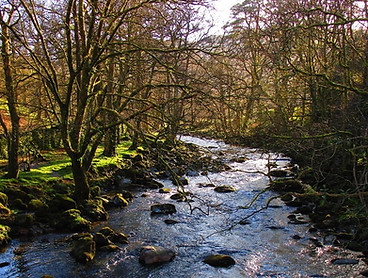
Geoenvironmental Consultants Ltd

Contaminated Land Risk Assessment
The evaluation of contaminated land begins at the Phase I Desk Study stage (often referred to as a Preliminary Risk Assessment), which determines whether any potentially significant pollutant linkages are likely to be present. The subsequent Phase II Ground Investigation tests the significance of these pollutant linkages, initially through a Generic Quantitative Risk Assessment (GQRA) based on standard published assessment criteria. Where a GQRA identifies a potential risk, or is insufficient to determine the significance of any risks, a site-specific Detailed Quantitative Risk Assessment (DQRA) can be carried out to more accurately quantify risks and ensure an appropriate response.



The Stages of Contaminated Land Risk Assessment
The first stage of contaminated land risk assessment is the the Preliminary Risk Assessment, a qualitative assessment undertaken at the Phase I Desk Study stage. Quantitative contaminated land risk assessment is subsequently undertaken based on data acquired during the site investigation and may take the form of a Generic Quantitative Risk Assessment (GQRA) or Detailed Quantitative Risk Assessment (DQRA).
A GQRA uses conservative criteria (often published by regulatory bodies or other organisations) as an initial screen to identify contaminants that are of potential concern. For soils, these are contaminant concentrations (known as Generic Assessment Criteria (GAC)) that if exceeded, may warrant further consideration or remediation. They are produced using an appropriate exposure model (in the UK this is usually the Contaminated Land Exposure Assessment (CLEA) model), which requires a wide range of toxicity and exposure parameters to be input to allow calculation of the GAC.
GAC are based on the ‘suitable for use’ principle and are available for a number of common land uses, such as residential, commercial, open space and allotments. The concentrations represented by the GAC are a function of the sensitivity of the site use, for example, the GAC for a residential land use are lower than for a commercial land use. The GAC used for contaminated land assessment in the UK are available from a number of sources, with the most commonly used being Category 4 Screening Levels (C4SLs) published by CL:AIRE on behalf of Defra in 2014, and Suitable 4 Use Levels (S4ULs) published by LQM/CIEH in 2015. Although developed using the same model, GACs published by different organisations can vary for the same substance due to the use of different input parameters. As such, the contaminated land assessor needs to be confident that the assumptions used in the development of the chosen GAC are appropriate for the subject site. However, all GAC are based on predominantly conservative assumptions (i.e. worst case) with regards toxicity and exposure for each land use, and if simply used as thresholds for mitigation can result in remediation works being undertaken that are not strictly necessary.
For waters, reference concentrations such as Drinking Water Standards (DWS) or freshwater Environmental Quality Standards (EQS) are often used as initial screening concentrations. However, these are not always directly applicable, especially when considering shallow groundwater quality.
A DQRA seeks to refine the assessment by taking site-specific data, such as soil parameters, building types, exposure durations, groundwater flow direction, distance to the receptor etc, in order to determine Site Specific Assessment Criteria (SSAC). The DQRA may be relatively straightforward, using data that is readily available as part of the ground investigation. In other cases, it may be necessary to undertake further targeted site investigation works to assess specific sources, pathways and receptors and build a more comprehensive dataset to feed into the model. As with all contaminated land assessments, the amount of information and level of detail required for the DQRA will depend on the assessment aims and objectives.
For soil contamination and the risks to human health, the CLEA model is usually the basis for calculating the SSAC and determining whether any potentially significant risks exist. The SSAC will essentially be used as a threshold, above which remediation works are likely to be required. This may simply involve comparing individual measured concentrations with the SSAC, but it is often more appropriate to calculate averages or mean values that are representative of a particular material or location, as this approach may be more consistent with the assumptions behind the SSAC calculation. Ultimately, this is a decision for an experienced contaminated land assessor who understands the rationale behind the model.
For groundwater, models such as ConSim or the Environment Agency’s Remedial Targets Methodology can be used to determine if recorded concentrations are likely to impact a sensitive receptor, such as a watercourse or a groundwater abstraction, or to calculate target concentrations which are unlikely to present a risk.
Assessments of the risks from ground gases are often complex and require consideration of a number of factors, although there are criteria published by organisations such as CIRIA and the BSI that can be used as an indication of a potential problem. The monitoring and assessment of ground gases is covered in more detail here.
G&J's qualified and experienced contaminated land assessors will determine the appropriate level of assessment to identify and quantify potential contamination risks and establish where remediation works are necessary to ensure a safe development. We aim to avoid unnecessary remediation works where this can be demonstrated through a high quality risk assessment.